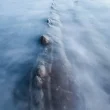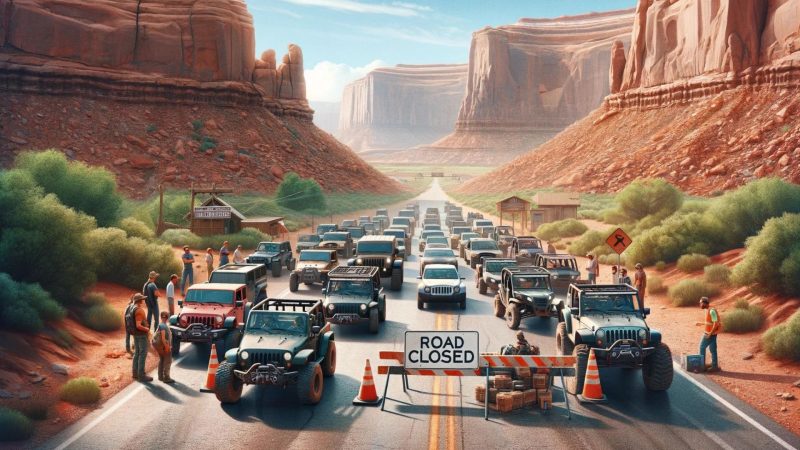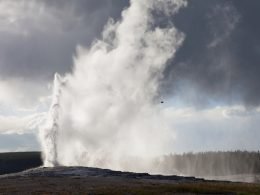The Bureau of Land Management (BLM) recently made a significant announcement that’s outraging off-roaders.
If your plans involve taking your vehicle off paved roads near Moab, you’ll want to be aware of it. Many consider it one of the biggest losses off-roaders have experienced in decades.
Today, we’re sharing all you need to know about this massive change and what to expect in the future.
Let’s dive in!
Why Are Off-Roaders Raging?
BLM officials have decided to close hundreds of miles of off-road routes surrounding Moab, Utah. The region contains just over 1,000 miles of off-highway roads.
However, this massive closure will shut down more than 300 miles of these paths. This would leave drivers roughly 700 miles of off-roading trails for their adventurers.
Some popular paths that will close include Hey Joe Canyon, Day Canyon Point, and Ten Mile Canyon.
Additionally, those using lookouts along the Green River in Labyrinth Canyon will need to find a new place to enjoy sunsets.
While officials may have reasons, closures impact the entire off-road community.
The remaining paths will become more crowded with fewer places to travel.
Drivers will have to watch for others more than usual, and these open areas can experience more wear and tear.
As a result, enthusiasts worry it could set the stage for even more restrictions in the future.

Why Is the Bureau of Land Management Closing the Trails
The Bureau of Land Management is closing trails to protect wildlife habitats, sensitive ecosystems, and cultural resources.
Environmental groups argued for the changes as it would close half of the legal water crossings in the area.
Ultimately, the BLM’s responsibility is to care for the land and its animals. These types of decisions aren’t ones they make lightly.
However, they’re often necessary to put the land and animals first.
Many fighting for the closures state that recreational use significantly impacts the land. They’re worried about the long-term issues that recreational users are causing.
Are the Closures Permanent?
Not only are large off-roading communities appealing the decision, but so is the State of Utah.
The state filed its appeal with the Interior Board of Land Appeals because a portion of the land generates revenue for the state.
Federal courts could eventually rule in their favor and reverse the decision.
Land closures aren’t always permanent. Officials could remove the closures once they’ve taken the proper steps to secure or protect an area.
Bridges and altering paths could reduce the number of water crosses to avoid polluting water sources.
However, these closures typically don’t go away quickly unless a federal court reverses the decision.
The trails could take years or even decades to open to the public again. We’ll have to wait and see.
Off-Road Trail Etiquette to Follow
If you enjoy off-roading, you must follow certain trail etiquette. This can help ensure everyone has a fun and exciting place to explore the great outdoors.
Remain on Designated Trails
One of the most critical pieces of trail etiquette is to remain on designated trails. Going off course causes damage to the environment, which can sometimes be impossible to repair.
If it is reversible, it can take several years.
Additionally, venturing off paths can disturb wildlife habitats and increase the chances of soil erosion.
Closures typically occur when officials notice significant adverse impacts from users not following this basic etiquette.
Do your part and stay on the trail!

Yield to Uphill Traffic
Another important rule is that drivers should always yield to uphill traffic.
This is because ascending an obstacle or rugged terrain is more challenging than descending.
It can be dangerous in some situations for drivers to regain speed or momentum when climbing hills.
Following this basic driving rule creates a safer and smoother driving experience for everyone. This is especially important in situations where the trail is narrow.
It’s a general sign of respect to offer those coming down a hill the right of way.
Remember, you’re not in a hurry; everyone is there to enjoy the adventure.
Slow Down
Just because your vehicle can go fast doesn’t mean it should.
One significant reason for trail closures is that drivers push their off-road vehicles to their limits.
This often leads to increased wear and tear on the path and surfaces.
Additionally, slowing down helps keep you and others safe.
You’ll be able to control your vehicle better, reducing the likelihood of accidents and other dangerous situations.
You’ll be able to make adjustments and be considerate of hikers, bikers, and others who may be using the trail.
Pack Out What You Pack In
When you’re off-roading, you must take everything you bring with you. Leaving trash and other items behind is one of the biggest reasons officials will restrict access to areas.
Food wrappers, water bottles, and other garbage pollute a site and can cause danger to wildlife.
If you’re in an open-top vehicle, wrappers, papers, and other items can fly out of your vehicle.
It’s a good idea to get in the habit of bringing trash bags or containers with you.
This can help you store trash and other items until you can dispose of them properly.

Respect Wildlife
There’s a good chance that you’ll eventually encounter wildlife during your adventures. Do yourself and the animals a favor and keep your distance.
Remember, you’re not in a zoo, and the animals are not domesticated.
Nothing separates you from them. They’ll defend themselves if they consider you a threat.
Additionally, do not feed any animals. It can be very dangerous when these creatures begin to see humans as a food source.
They can become very aggressive, especially towards future individuals who may follow the rules and not give them a bite to eat.
Stay Out of Water
A primary concern and reason for many trail closures is water pollution from vehicles entering the water.
Driving through streams, rivers, ponds, and other bodies of water can introduce many contaminants into the water system.
Many trails with water crossings will have fording points that reduce erosion and disrupt the environment.
These can also help minimize the chances of causing damage to a vehicle, including the engine, transmission, and other electrical systems.
While some vehicles can handle it, not every off-roading vehicle can.
Avoid Private Property
If you want to upset a private property owner, try driving your off-road vehicle onto their property.
You may start on public lands, but that doesn’t mean you’ll always stay there.
All it takes is a wrong turn, and you could find yourself on somebody’s land.
If they find you, don’t be surprised if they’re not happy to see you.
Plan your route ahead of time and use a GPS to ensure you stay on the trail.
Some landowners deal with trespassers frequently and have little patience for them.
In addition, if you’re tearing up their land, they’ll likely have a few things to say about it.

Could There Be More Trail Closures?
Trail closures are nothing new and are becoming increasingly more common. Many blame these closures on the increased number of side-by-side vehicles.
However, the vehicles are not the problem, but the drivers. Drivers must know how they impact the land and what it means for future users wishing to cruise along routes.










